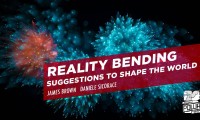The human body is a wonderful thing, I admit some more wonderful than others, but I digress.
We all give of subtle signals, cues and tells. These are subconsciously taken in, but consciously we are not always aware of what is happening. We can make our selves more aware of how our body is communicating by becoming masters of observation, and learning someone’s baseline, and then looking for movements outside of the norm.
Wikipedia Definition – Body language is a form of non-verbal communication, which consists of body posture, gestures, facial expressions, and eye movements. Humans send and interpret such signals subconsciously.
Of course most of our subconscious movements are generic to everyone, with only slight changes due to cultural changes. It was my initial plan to consolidate the whole body into a single post, however I think it would be better to do a series covering the different parts of the body. So this post focuses on possibly the most revealing part of the body, that is often not considered… The legs and feet. In the future we will look at the torso, hips, chest and shoulders, the arms, hands and fingers, and lastly the face.
The Feet and Legs
If you were to ask most people the question “what part of the body gives the most away, if you were looking for information from body language?” I think most would say the face. Although this is true, and we do give alot away with facial expressions, eye movements, and touching of the face, the legs and feet have alot to say also.
So why is this so? Most of our movements from a body language perspective happen subconsciously, so we are not really sure what is happening, its our limbic system doing what it does best, controlling emotions, behaviour and more. Our legs and feet particular are often hidden out of sight, so out of sight, literally out of mind. Due to this fact, this is why the lower part of our body can give alot away, and ensuring we pay close attention can tell us alot.
What to look for, and what does it mean
Wiggling and bouncing feet is something people would normally relate to a child, but its something we don’t forget as we get older, we just take it for granted. However if you observe someone, and after they receive good news, you will see them demonstrate the high confidence tell that is wiggling of the feet. Obviously looking directly at the feet will make viewing very easy, but looking for bobbing shoulders is also a good sign of what is happening down below. It is important to realise there are subtle differences between this, and moving legs and feet, that signifies impatience. Such as a tapping foot when you are waiting for a late bus.
Feet can also non verbally signify when we find a situation, or individual agreeable. We turn to things we like, and away with what we do not, the important thing here though is how much we turn. If we turn our whole body, we are showing 100% commitment to how we are feeling, however if we just turn our upper torso, then if we look at the feet, they are normally communicating the truth. When you greet someone if they turn around to face you, they are welcoming you, if they just turn their upper body, they are probably not so keen, and their feet demonstrate they would like to continue as they were. You may also notice how the feet change during an interaction, moving from facing you, to one or both feet pointing in another direction. This is a signal that they would like to conclude the interaction and head in the direction their feet are heading. Another example is when someone is being questioned, or interviewed. They may be sat facing you, but as difficult questions occur, you may notice the feet pointing towards the door. This is a signal they would rather not be there, this may be double up with clutching or rubbing of the knees, giving the intention wanting to get up and leave.
So how about the legs. Legs can tell us alot about how someone is feeling. If someone is relaxed and standing or sitting cross legged, they are comfortable with the situation. The reason for this is they are unbalanced, and not in a position to make a quick get away. If this changes to both feet firmly on the floor, then this is a more of an assertive stance, and a position you can make a prompt get away.
The legs also can show you when someone is looking to be assertive, this is a territorial stance and you will see that people open their legs wider to take up more and more space. When two people are challenging each other you can see each other stance slowly widening. This is something you see even more commonly with military and law enforcement individuals.
Another example of where the legs and feet tell us what we are thinking is when we are sitting with our legs crossed. If we are sat with our legs are crossed with our leg facing away, this is a form of protection and creating a barrier. Leg crossed facing towards removes the barrier, and shows comfort. Interestingly in this position we can see that some people will also giggle their leg naturally. This is not necessarily a sign of nerves, infact it may be comfort. However you may notice this giggle change to the more kicking motion when questioned and a topic of discomfort occurs.
I hope this was of some interest, and there is obviously alot more to it, and it all seems very obvious once you become familiar. I recommend reading the papers and books of Joe Navarro if you want to learn and study more. So next time you are speaking with people, see what their feet and legs are doing, and next time you experience this yourself, adjust your body language, can you send a mixed signal?

















